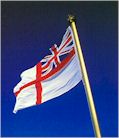
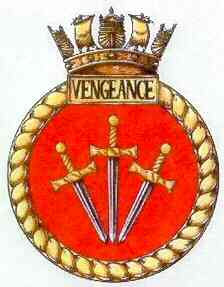


FRYER, Ernest
Sub-Lieutenant
H.M.S. Vengeance, Royal Naval Reserve
who died on
Tuesday, 15th June 1915. Aged 28
Ernest was the son of Mahala Rebecca Paczensky (formerly Fryer) of 8, Belsize Park, Hampstead, London and the late Robert Fryer, native of Abberton. They lived at Abberton Glebe. Ernest was born in 1887 and was his parents third child. His father died a few years later and his mother re-married in 1900.
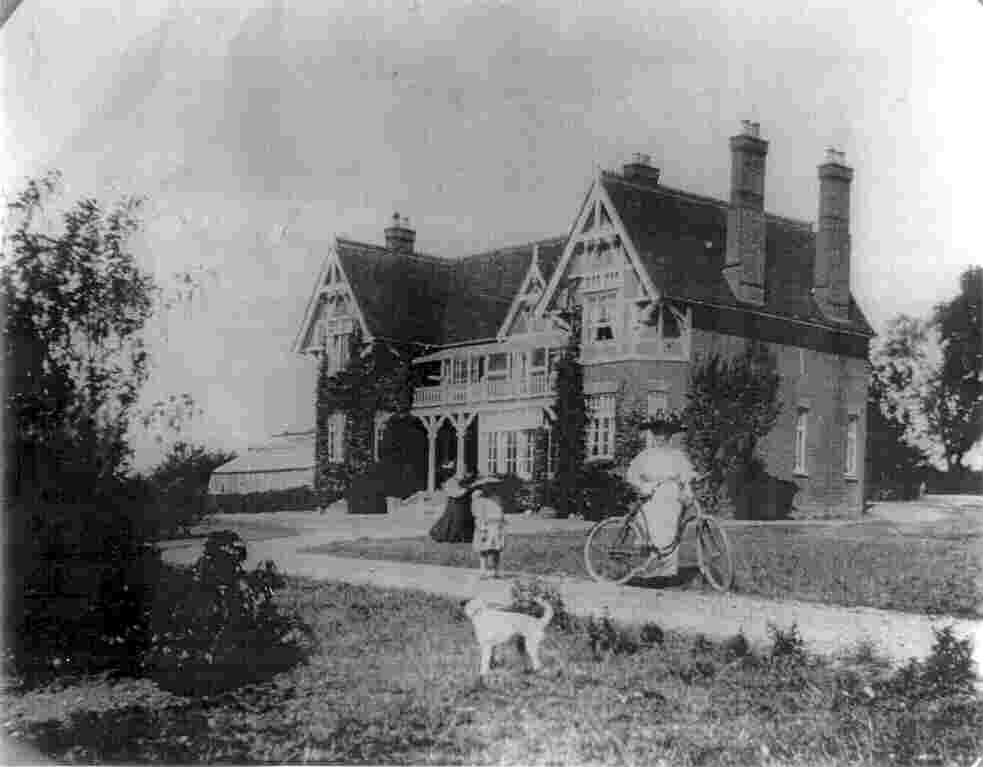
Ernest, as a twelve year old boy decided to run away to sea and joined a windjammer in London Docks. The Captain contacted Mrs. Paczensky and persuaded her that Ernest should be allowed to sail with him, as the ship was returning in a few months. Furthermore the experience would "get it out of his system". In fact Ernest decided that "this was the life for me". He stayed with the Merchant Navy until he joined the Royal Navy, as war approached.
Ernest joined the RNR and was commissioned, as a Sub Lieutenant on the 12th June 1912. He was serving on HMS Vengeance, which was an obsolete coal fired Battleship of the Canopus class. She had four 12 inch and twelve 6 inch guns plus lighter weapons. She was at the Nore and used as a Gunnery Training Ship.
August 26th 1914
H.M.S. Vengeance left Portland to patrol off Ostende until the 1st September. She patrolled in the Channel throughout September and October, checking on other vessels from trawlers to liners and cargo vessels. She periodically called into Plymouth, Portland and Portsmouth to coal and to re-provision.
6th November 1914
She left Portland for Gibraltar, arriving there on 10th November.
8th December 1914
She left for the Cape Verde Islands, taking up station near Cape Saint Vincent until the 26th January 1915. At this point she returned to Gibraltar, before leaving on the 1st February for Malta and ultimately the Dardenelles.
The Admiralty considered that she was no longer fit for Fleet Action but would be suitable to bombard Turkish Forts, where she out-ranged their guns. She was therefore incorporated in the Fleet sent to the Mediterranean in 1915 to force passage through the Dardenelles.
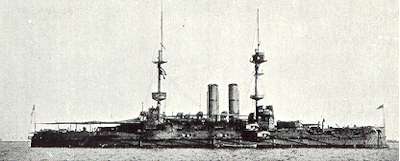
HMS VENGEANCE
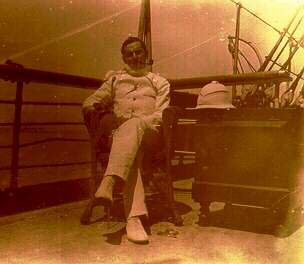
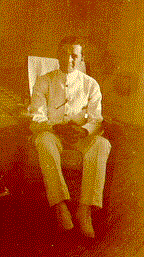
The Anglo- French fleet that assembled to force the Dardenelles on February 19th 1915 was large. It comprised 14 British and 6 French Battleships, 2 semi-dreadnoughts (H.M.S. Lord Nelson & H.M.S. Agamemnon), the battle-cruiser H.M.S. Inflexible and the newly commissioned flag ship of Admiral Carden, H.M.S Queen Elizabeth. These were supported by destroyers, cruisers, mine sweepers and other auxiliary craft.
Between 1000 hours and 1400
hours, there was a slow bombardment of the Turkish forts. The Fleet then closed to 6000 yards and at 1645 hours, 3 ships including H.M.S. Vengeance went in closer and drew return fire. At dusk Vice Admiral de Robeck, in H.M.S. Vengeance, requested permission to continue the action but this was denied as the ships were silhouetted by the setting sun. Over night the weather worsened and the action was postponed.26th February 1915
H.M.S. Vengeance made an attack on the Turkish gun emplacements on the South side of the approaches to the Dardenelles at Kum Kale. While the ship’s guns fired at shore positions a demolition party under Lieutenant Commander Robinson was sent ashore at 2.20. They were supported by a covering force of 49 of the Royal Marine Light Infantry, under Major Heriot. During the attack they came under heavy fire. Lieutenant Commander Robinson told his sailors to stay where they were, as their white uniforms made them conspicuous, and went on alone with charges of gun-cotton to blow up 2 AA Batteries. For this action, he subsequently received the Victoria Cross. The landing party returned to H.M.S. Vengeance at 6.30. There was 1 dead and 3 wounded. The 3 wounded were transferred to a hospital ship. The dead man was Sergeant Ernest Turnbull, CH/14297, aged 28 from Clapham Common in London. He had been hit by bullets in the right leg, chest, abdomen and right wrist. He also had bayonet wounds. The tradition in the Royal Marines was and probably may still be, is to risk further casualties to recover not only their wounded but also their dead. Sergeant Turnbull is commemorated on the Chatham Naval Memorial.
The next action was on the 5th March, when the fleet took on forts, farther along the peninsula. These forts had heavier calibre guns than those previously attacked. The bombarding ships were hit though fortunately damage was slight.
On the 18th March a final attempt was made to break through the minefields, this time in daylight. The French battleship Bouvet hit a drifting mine and sank in only 3 minutes. This prompted the Turks to release further drifting mines, which resulted in the sinking of H.M.S. Irresistible & H.M.S. Ocean. The French Gaulios and H.M.S. Inflexible were both hit by shore guns. Subsequently, the fleet gave up the attempt to force the Dardenelles and the Army became involved with the Gallipoli landings on the 25th April.
Details of Ernest's death are not available. The Ship's Log of H.M.S. Vengeance for the day of his death records that they were at moorings, as they had been for several days. They were in fact repainting sections of the ship. The log records at 1130 hours "Sub Lieutenant Fryer RNR died of burns". At 1530, there is a record "Trawler 48 proceeding: conveying remains of Sub Lieutenant Fryer RNR for burial , Abberton Glebe, Abberton Essex." Then follows a description of his injuries and the fact he was a British National. It would appear therefore he was lost in a shipboard accident. His family believe he had been injured a few days previously in fighting a fire aboard another ship.
It is probable that Ernest was buried at sea in accordance with Naval Tradition from Trawler 48. This would have been close to Mitylene where H.M.S. Vengeance was anchored. She had sailed to this position on the 6th June from Mudros in the island of Lemnos.

The sextant used by Ernest and his sword were passed to his nephew, Captain Peter Archer RN (retired).
Ernest was awarded the British War Medal, the Allied Victory Medal and the 1914- 1915 Star.
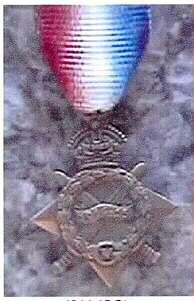
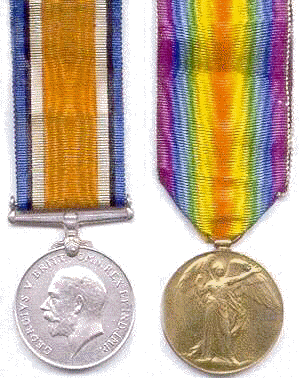
Ernest is commemorated at Portsmouth Naval Memorial, Hampshire. Grave 9. This memorial is situated on Southsea Common overlooking the promenade, and is accessible at all times.
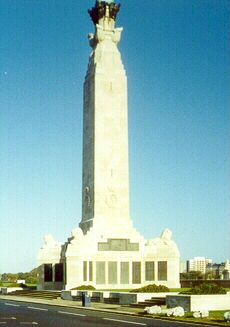
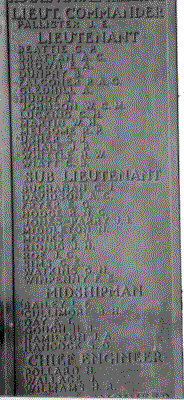
REFERENCES
Pictures are from Captain Peter Archer, RN (retired), nephew of Ernest.
Information obtained from The Commonwealth War Graves web site. www.
cwgc.org/The pictures of the medals were kindly provided by Worcestershire Medal Service Ltd.
Information on H.M.S. Vengeance was obtained from the Ship's Log held at Kew Record Office and general literature on the Dardenelles campaign.
08/04/01 last updated
**********************************************************
These pages are dedicated to the memory of the Fallen from the two World Wars, who lived in Abberton & Langenhoe.. Prepared by Saint Andrew's Parochial Church Council. November 11th 2000